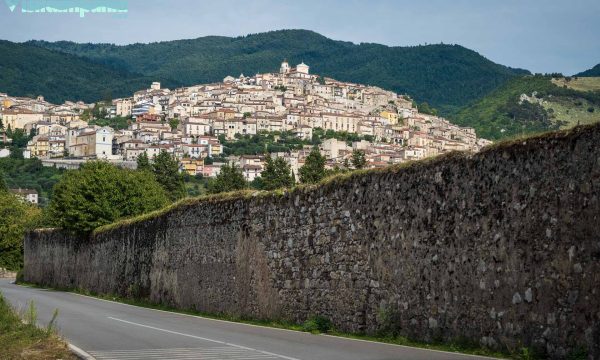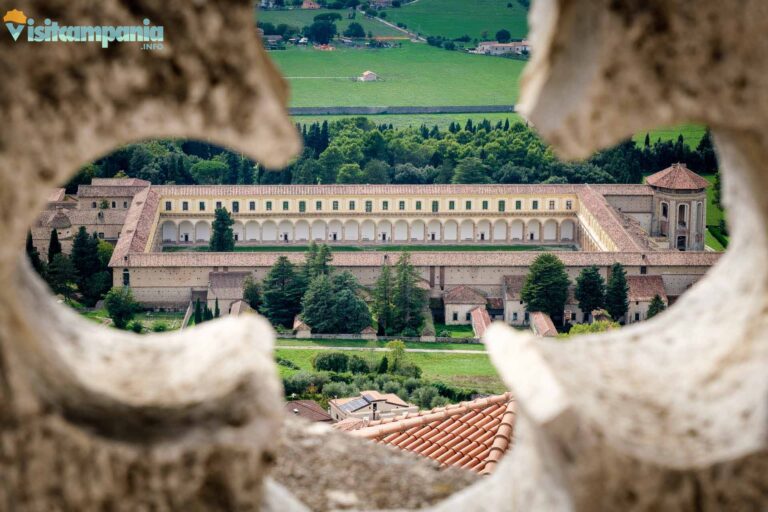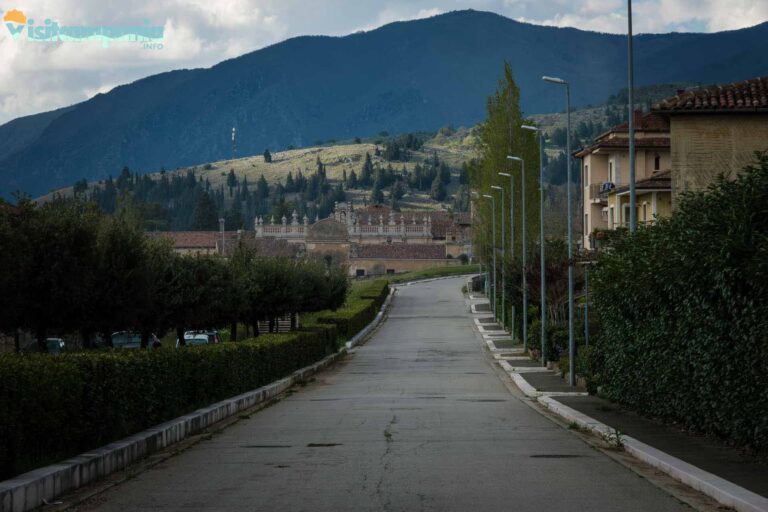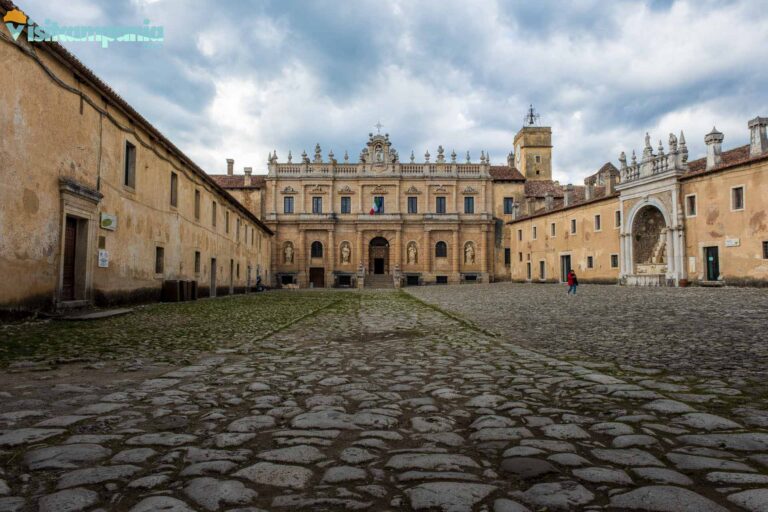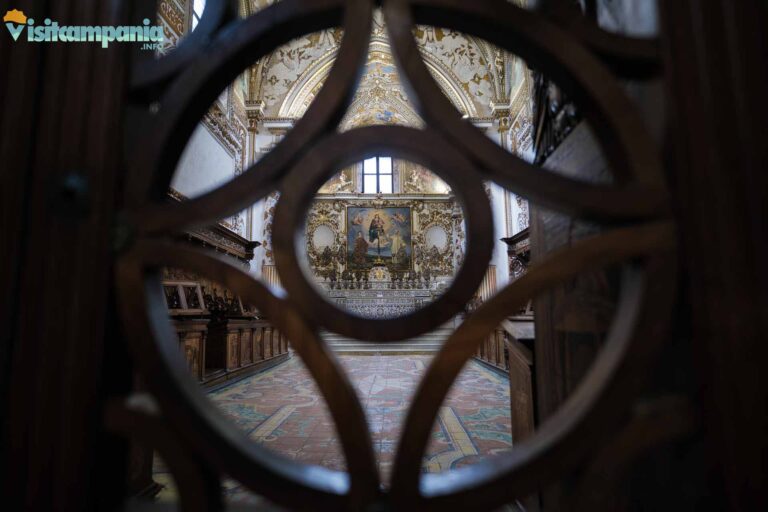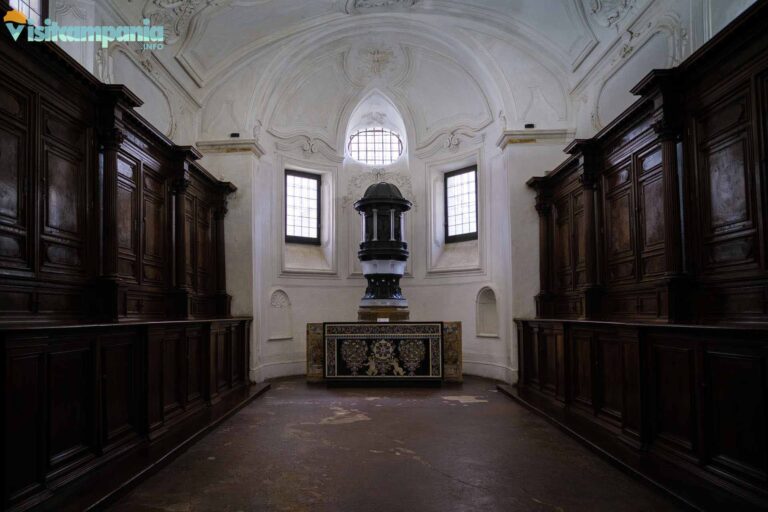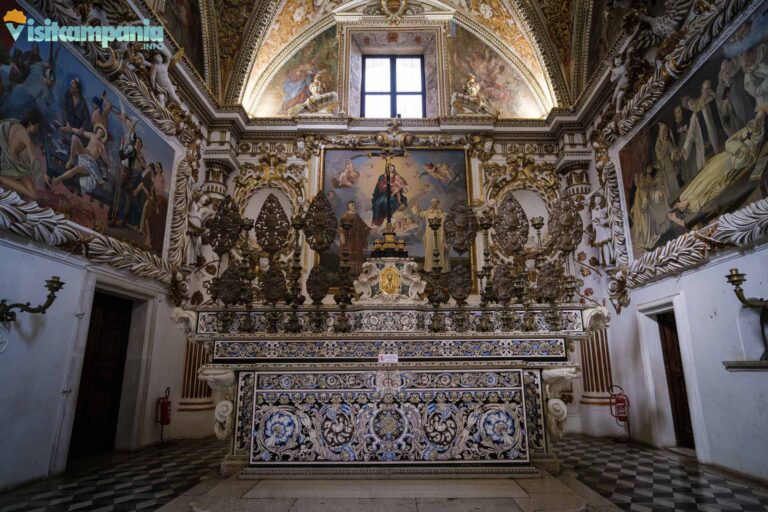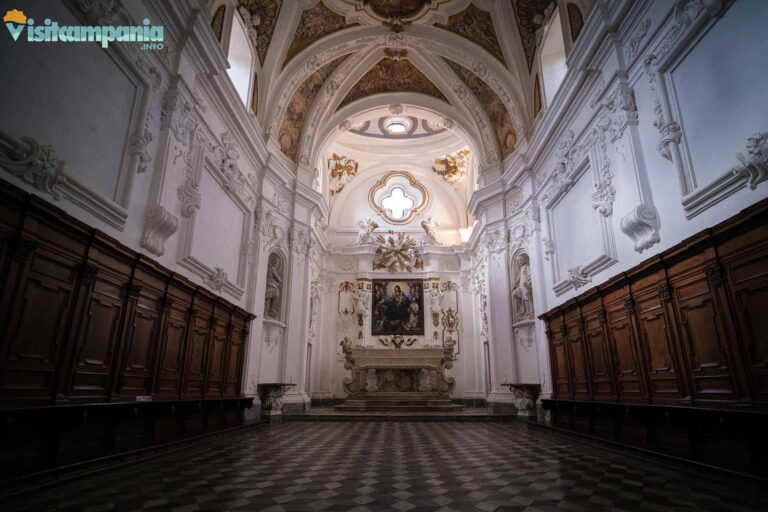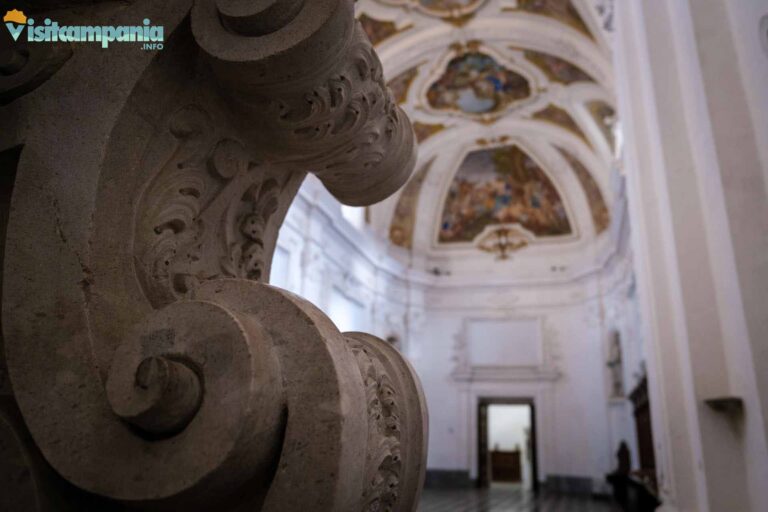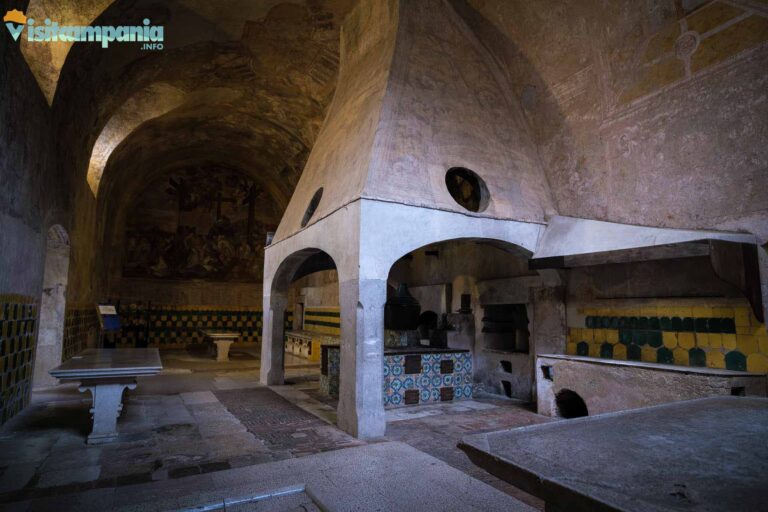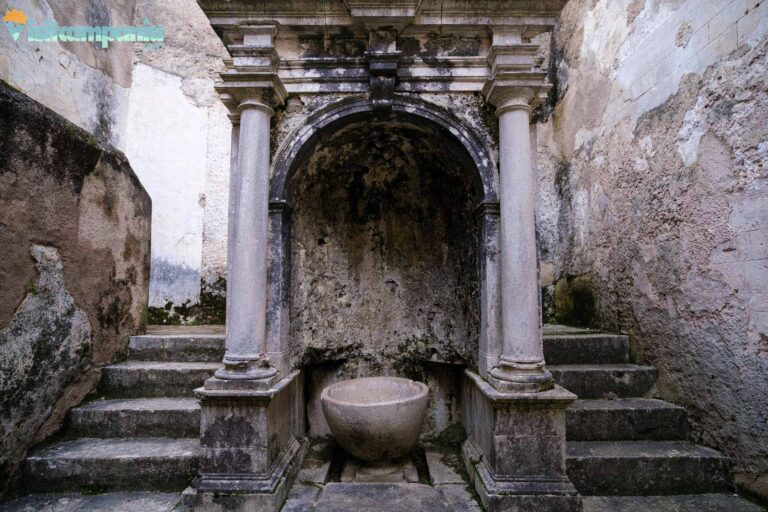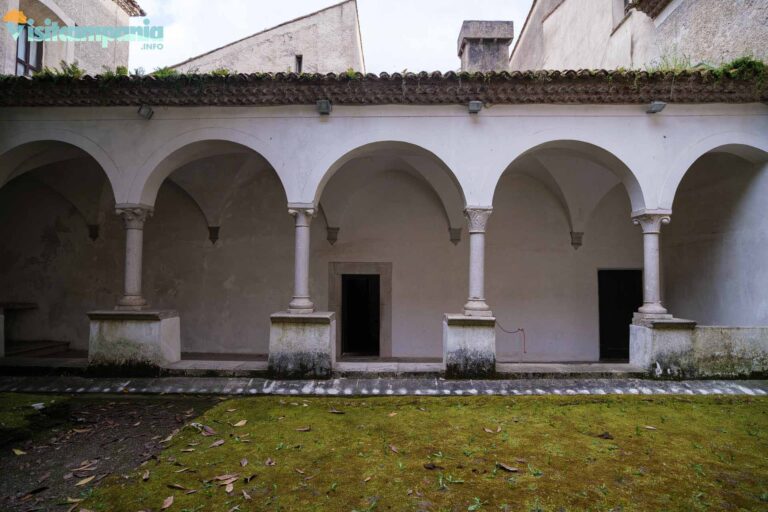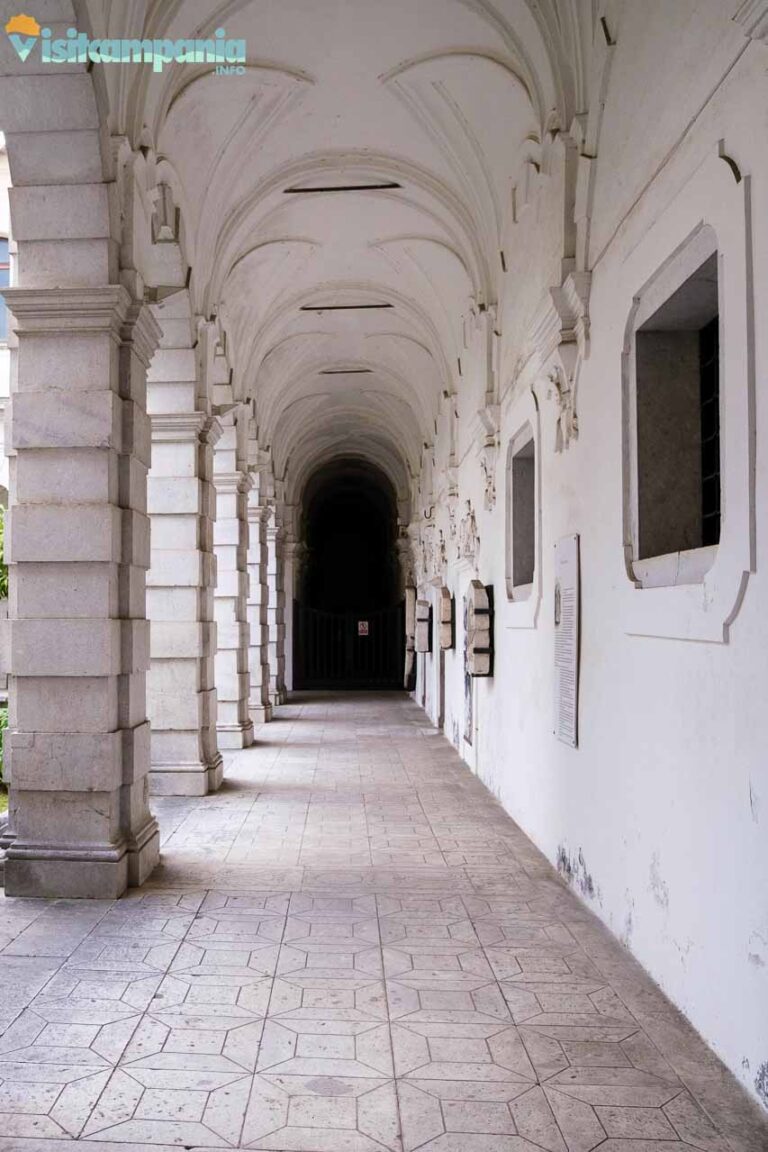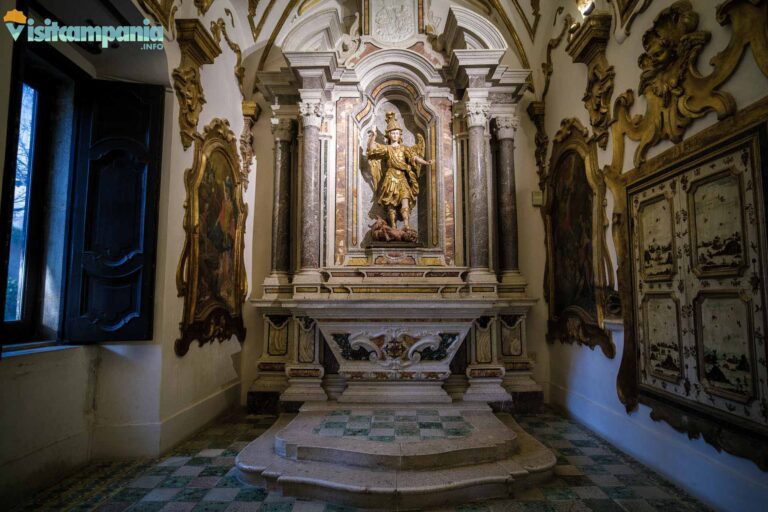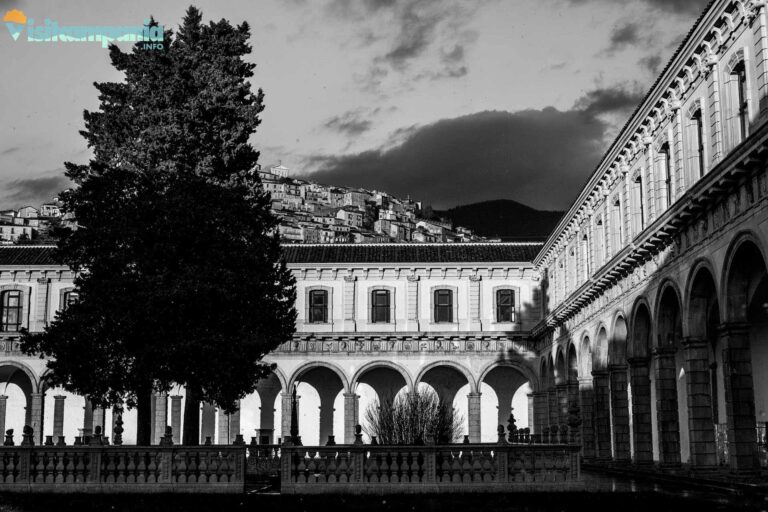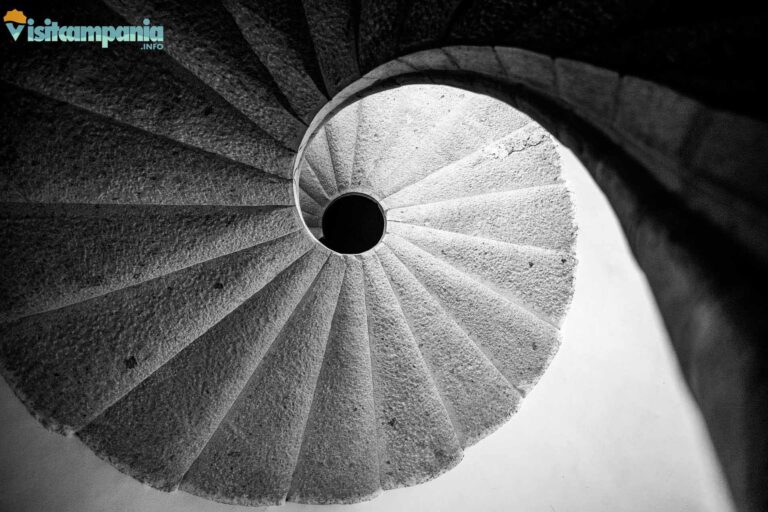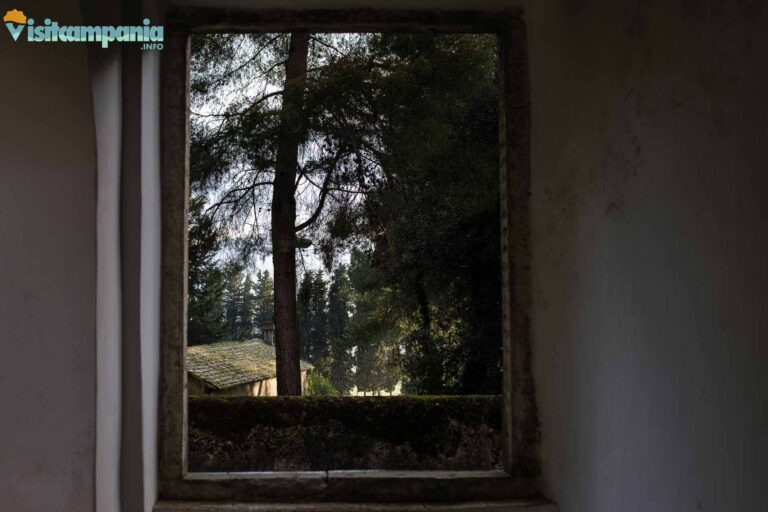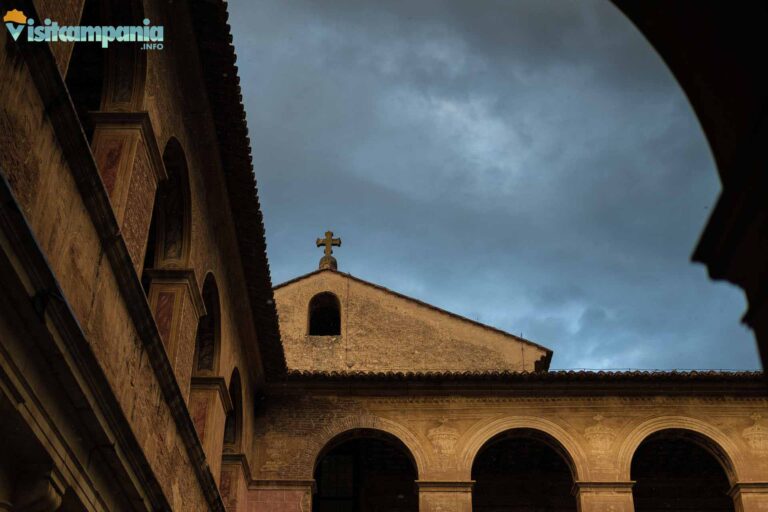What is the Certosa di San Lorenzo?
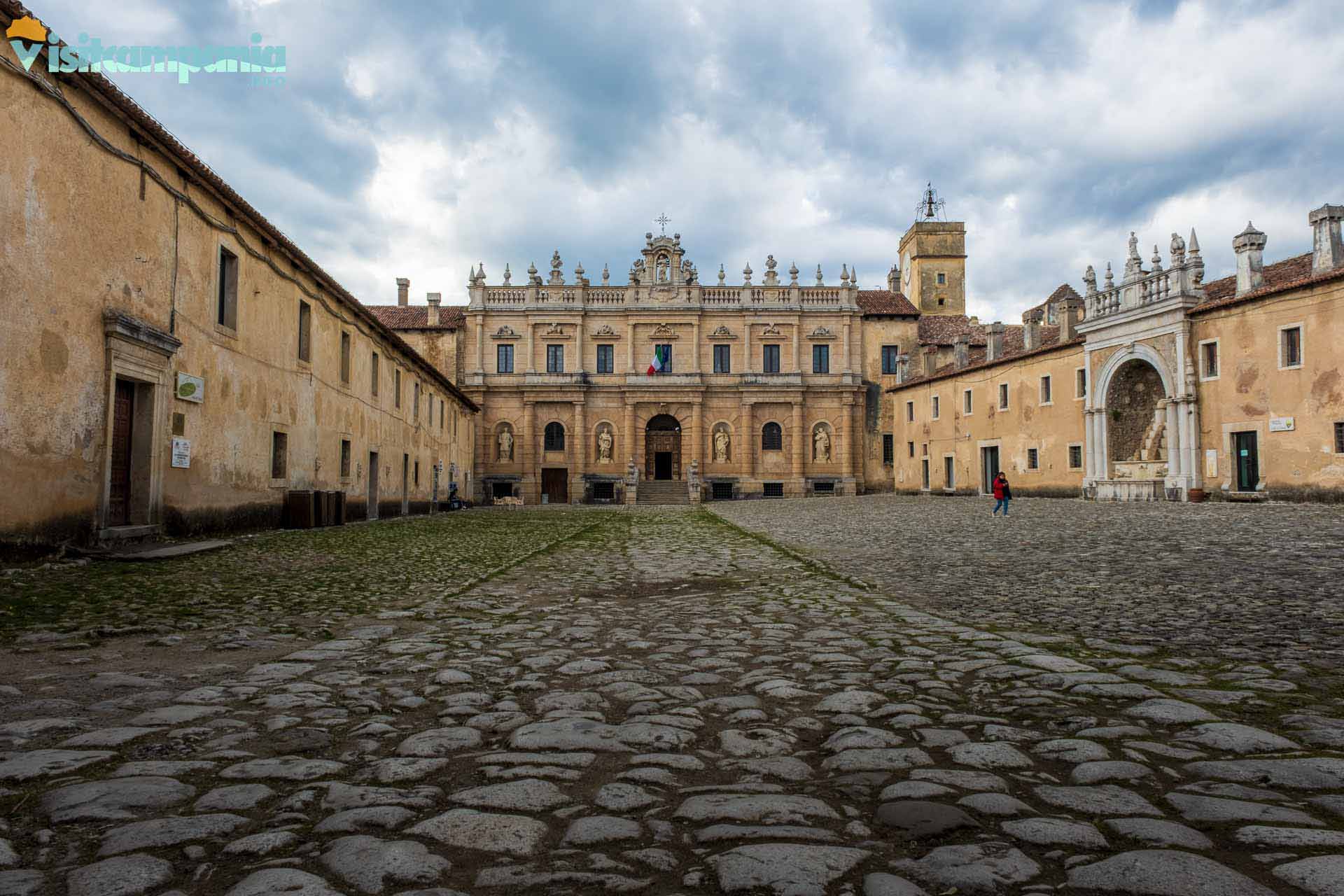
The Certosa di San Lorenzo, also known as the Certosa di Padula , is an imposing Carthusian monastery, no longer used for worship , located in Padula , in the heart of the Vallo di Diano , in the province of Salerno . With over 51,500 m² and approximately 350 different rooms, it is the largest monastic complex in Southern Italy and one of the most impressive in Europe .
Since 1998 it has been part of the UNESCO World Heritage, together with the fascinating and nearby archaeological sites of Velia and Paestum and the suggestive Cilento National Park . But it doesn’t end there: inside the Certosa you will find the Provincial Archaeological Museum of Western Lucania , founded in 1957. It houses ancient treasures that tell stories from the prehistoric period to the Hellenistic age , finds discovered right in the areas surrounding Padula.
Brief history of the Certosa di San Lorenzo
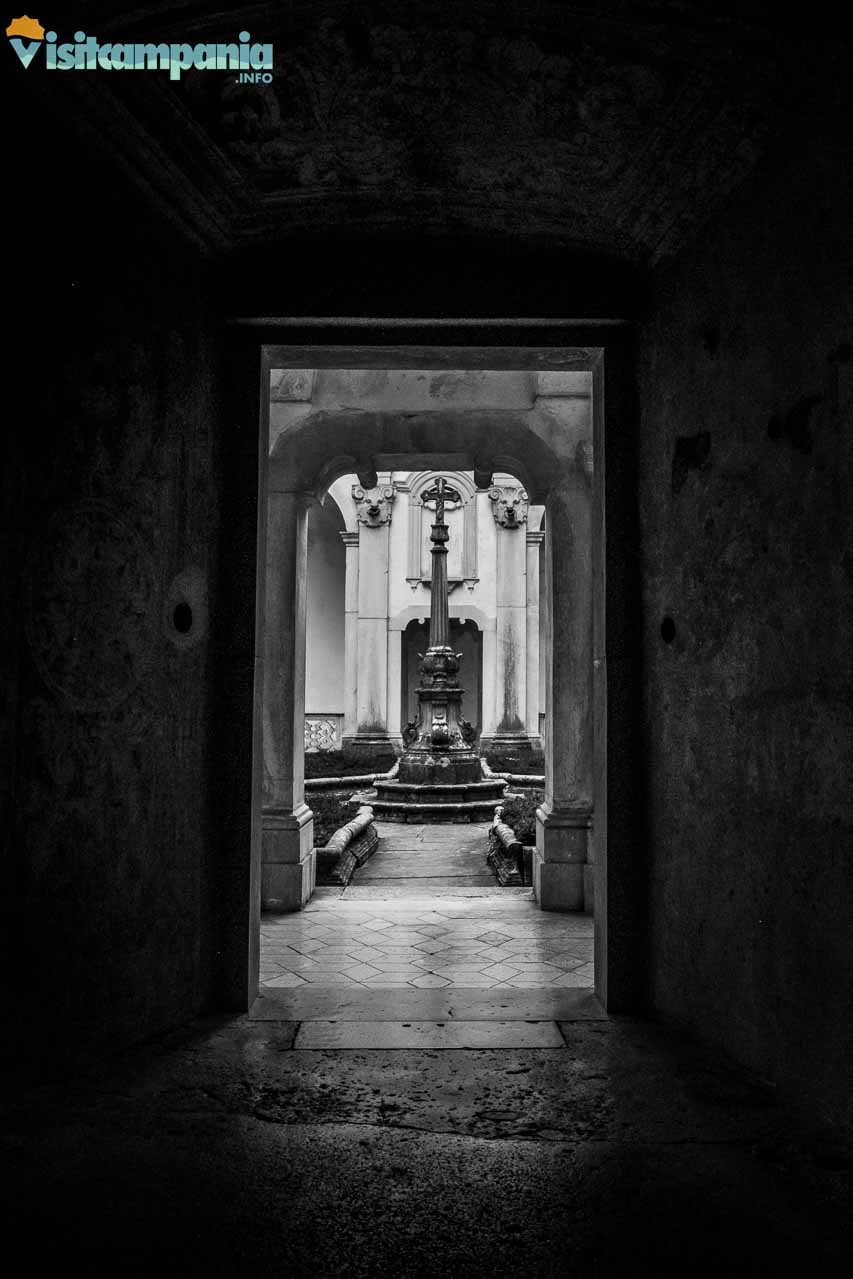
The Certosa di Padula has ancient and fascinating origins. Founded on 28 January 1306 by order of Tommaso II Sanseverino , Count of Marsico and powerful lord of the Vallo di Diano, it was built on land that already hosted a grange, a typical medieval farm run by monks and lay staff. The official birth of the monastery was confirmed a few months later, on 17 April 1306 , by Charles II of Anjou .
The Carthusians, French monks known for their contemplative and industrious life, were charged with managing the complex . The goal? To strategically strengthen political alliances and reclaim the fertile surrounding lands. The monastery was dedicated to San Lorenzo , in homage to a Benedictine church previously present in the area, demolished to make way for the new Charterhouse.
The Certosa di Padula was not built in this place by chance . The choice of its location was the result of a careful economic strategy . The area, in fact, was rich in fertile land ideal for producing wine, oil and vegetables. These products, in addition to ensuring the sustenance of the monastic community, fueled flourishing commercial activities, transforming the monastery into a true economic reference point for the area.
Thanks to its strategic position, the Certosa directly influenced the trade and exchanges that led to the Kingdom of Naples . But it was after the fall of the Sanseverino family , which occurred with the Conspiracy of the Barons in the 15th century, that the Carthusian monks assumed full control of the surrounding lands and neighboring villages. From that moment on, the prestige, power and wealth of the Certosa grew further, making it an authentic symbol of the prosperity of the territory.
From Gothic to Baroque
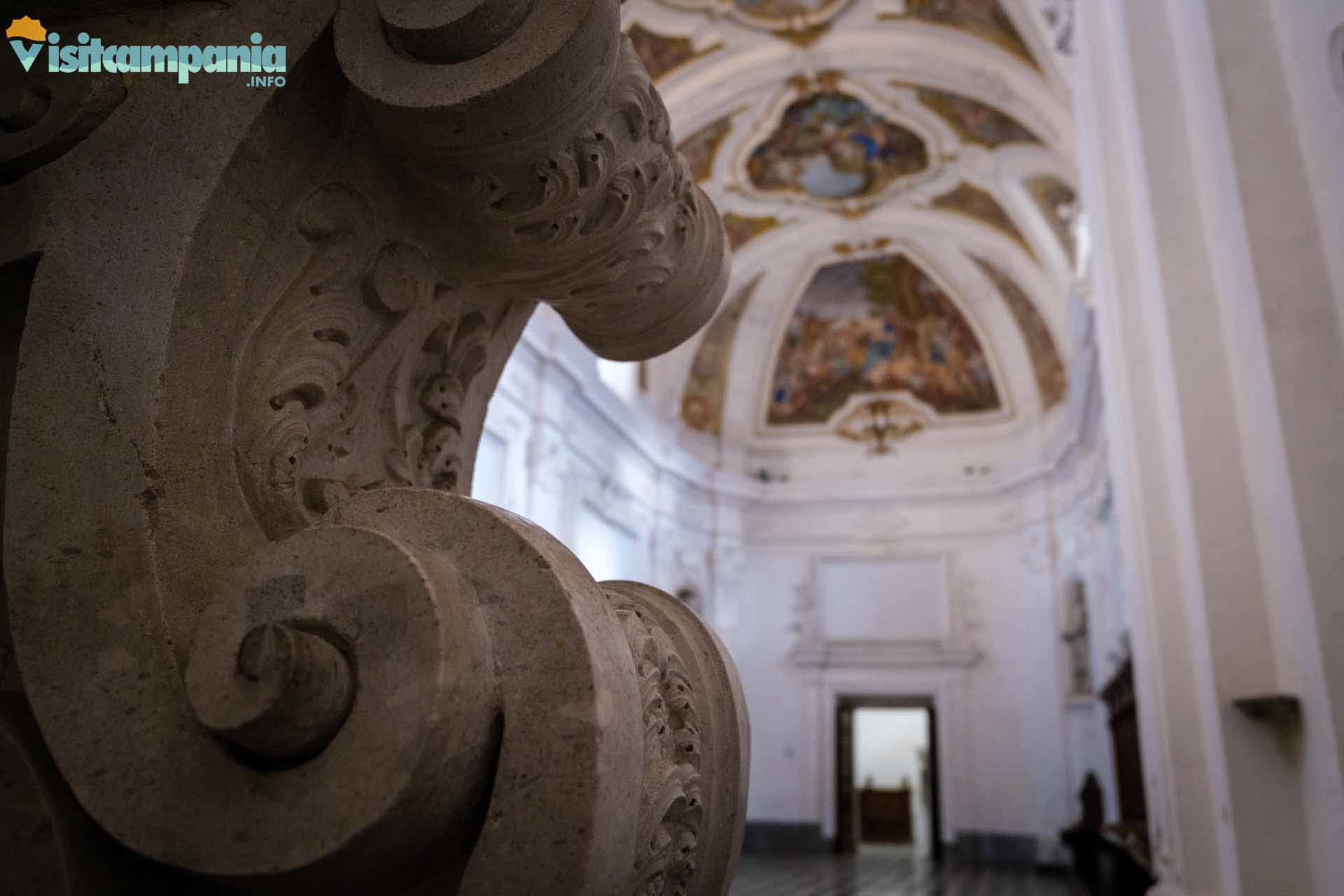
Between the 16th and 18th centuries, the Certosa di Padula experienced its period of maximum splendor , enriching itself with extraordinary architectural and artistic works that made it an authentic jewel of Neapolitan Baroque . The importance of the Certosa is also demonstrated by the fact that, in 1535, the monks even welcomed the emperor Charles V , for whom they prepared a legendary omelette of a thousand eggs!
In the following decades the Certosa was the protagonist of important works that profoundly changed its original Gothic appearance , enriching it with splendid decorative statues and culminating, in 1723, with the completion of the imposing main façade.
The Certosa di Padula was not only a spiritual and artistic place, but also an important economic hub with numerous granges and feudal possessions, including those of San Lorenzo in Sala Consilina and Santa Maria in Pisticci. In 1771 it employed 195 people , a number that testifies to its great economic and social weight in the region.
Decline and rebirth
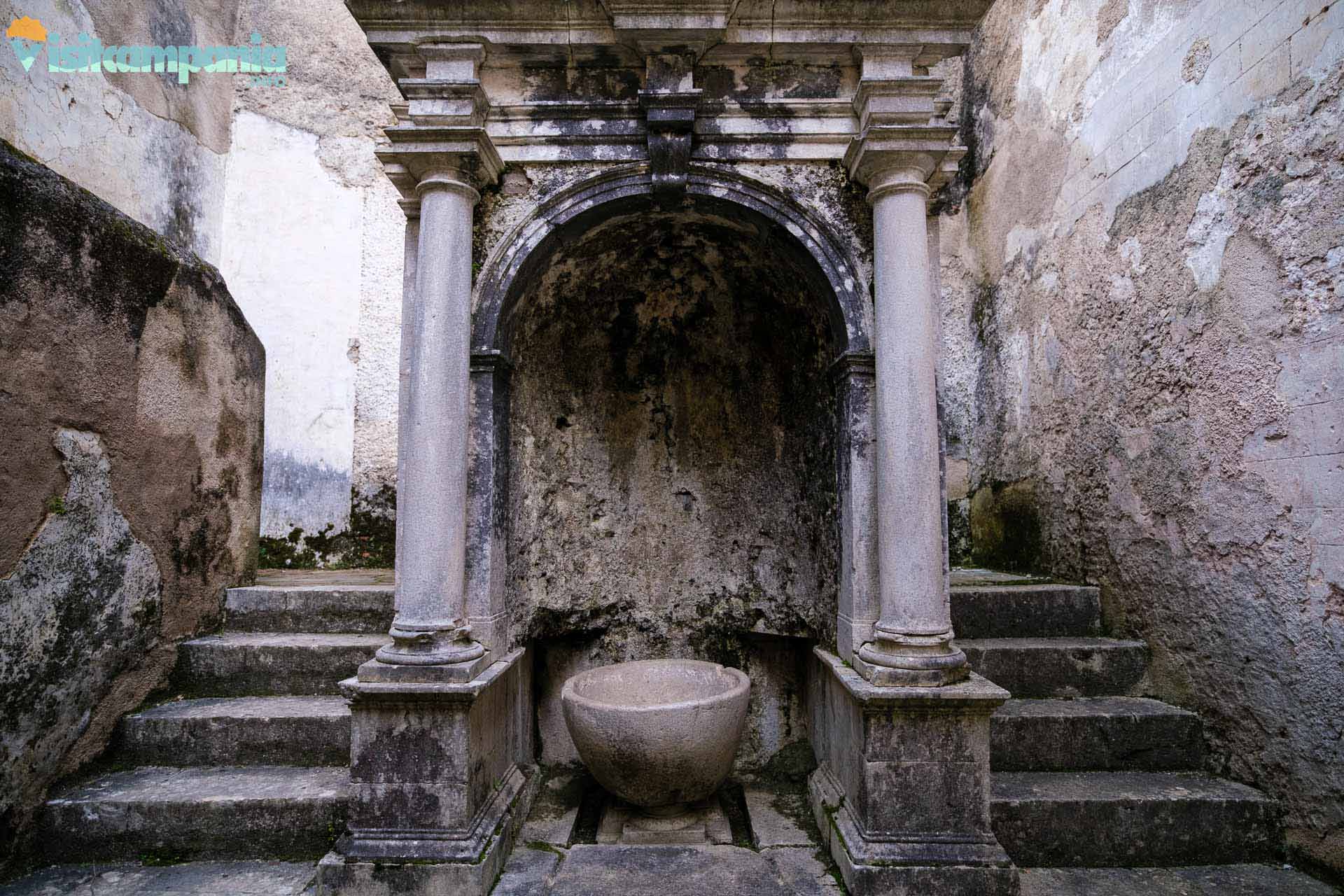
However, in 1807, with the arrival of the Murat decade, the history of the monastery changed drastically . The Carthusian order was suppressed , and the Certosa was transformed into a military barracks. A difficult period began, marked by looting and the transfer of precious works of art to Naples.
With the return of the Bourbons , the Carthusian monks were finally able to return to the Certosa di Padula, but they never managed to recover the prestige and power of the past. In 1866, with the unification of Italy, the monastery was definitively abandoned by the religious and, in 1882 , it officially became a national monument .
During the two world wars , the Certosa went through an even darker period. Transformed into a military prison camp , it began to recover only in 1957 , when it began to house the Provincial Archaeological Museum of Western Lucania . In 1981 it was restored and enhanced as a monumental site, entering the UNESCO World Heritage in 1998 .
Today , in addition to being an extraordinary place of culture and history , the Certosa di Padula hosts exhibitions and cultural events and has been officially recognised as one of the prestigious ” Places of the Contemporary ” by the Ministry of Culture.
The Carthusian Order
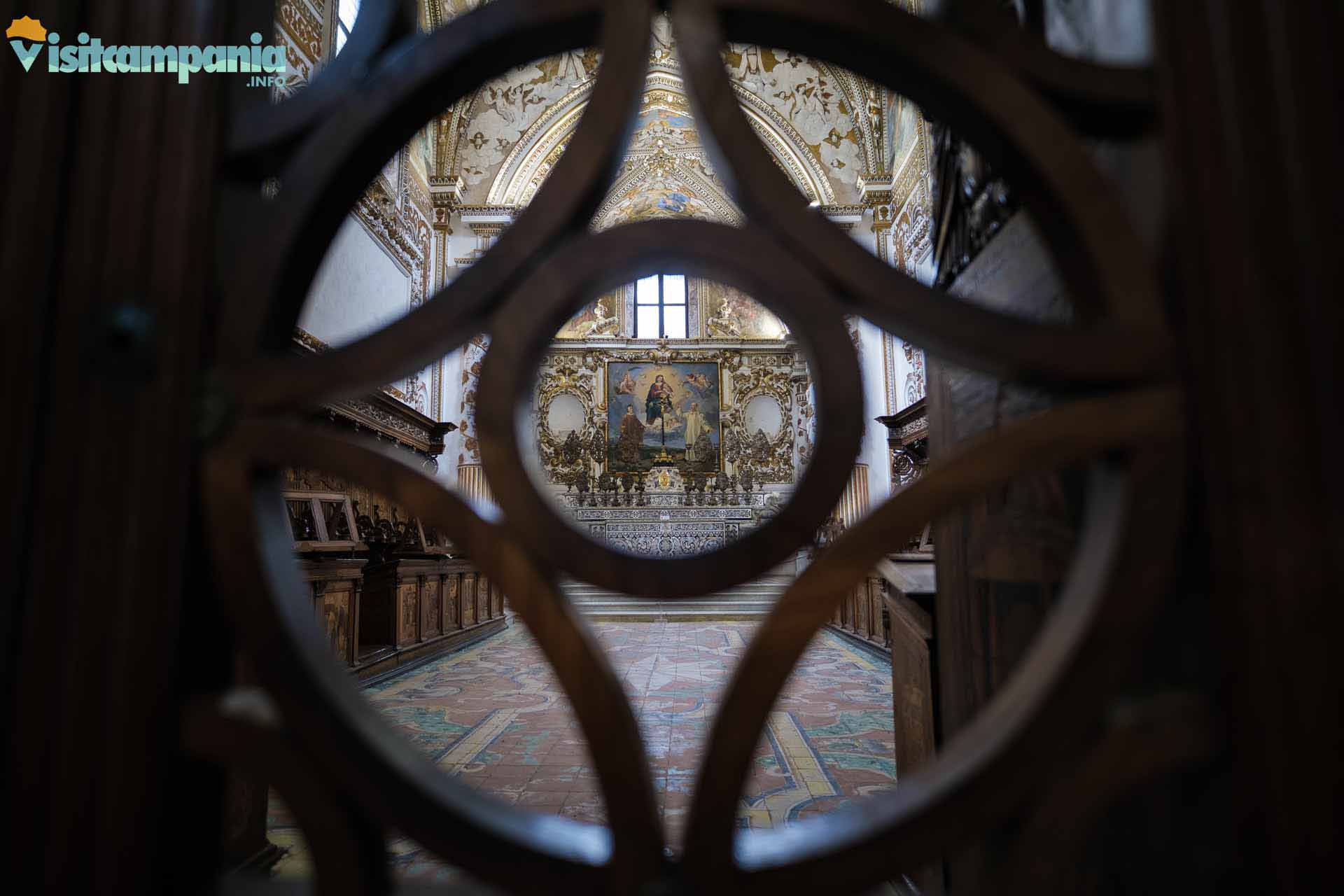
Founded in 1084 by Saint Bruno of Cologne , the Carthusian Order is distinguished by the rigor of its monastic life , centered on solitude, absolute silence, and contemplative meditation. The Carthusian motto, ” Stat Crux dum volvitur orbis “ (“The Cross stands firm while the world turns”), perfectly encapsulates the spiritual essence of the order: stability and profound devotion in an ever-changing world.
The Carthusians spend most of their time in isolation in their cells , small private hermitages, meeting with the community only to share brief moments of prayer, liturgy and sporadic occasions of community life.
Life in the Charterhouse follows precise and regular rhythms , marked by moments dedicated to prayer, such as Matins and Vespers, silent meditation, manual work and study. The Carthusian monks are divided into two main groups : the Carthusian fathers , who have received or will receive priestly ordination and spend most of their time immersed in contemplation and theological study, and the lay brothers , lay monks who take care of practical daily activities, such as cultivating the land, doing crafts and looking after the monastery.
Despite its strict isolation, the Order maintains limited but necessary relations with the outside world through a special figure, the procurator , who is responsible for managing all commercial and administrative matters.
The Role of Charterhouses in European Culture

For centuries, the Charterhouses have been crucial places for European culture, true custodians of knowledge, dedicated to the preservation and transcription of ancient manuscripts . Hence the expression ” Carthusian work “, which indicates scrupulous, meticulous and patient work . This saying was born precisely with reference to the Carthusian monks, known for dedicating their lives to silence, prayer and above all to careful and meticulous work, such as that of transcribing ancient manuscripts and attention to detail in daily activities within the Charterhouse.
The Charterhouses were also points of reference for travellers , offering hospitality and refreshment along their journey.
In Italy, some of these extraordinary monastic realities still exist today and continue to preserve the ancient Carthusian spirit. Among these we find the male Certosas of Farneta and Serra San Bruno , and the female one of Trinità.x
The Great Chartreuse
Located in the French Alps near Grenoble, the Grande Chartreuse is the founding and principal monastery of the Carthusian Order , established by Saint Bruno in 1084. Immersed in a breathtaking landscape, this monastery stands at an altitude of 1190 metres, protected by nature and wrapped in absolute peace at the foot of the imposing peak of the Grand Som.
To protect the silence and spirituality of the monks, the main structure is not open to the public . However, a short distance away, in the town of Correrie, it is possible to visit a museum that tells the story of Carthusian life through the faithful reconstruction of the original cells , delving into the history and charm of an order that for over nine hundred years has embodied the spirituality of silence and contemplation.
What to see at the Certosa di San Lorenzo
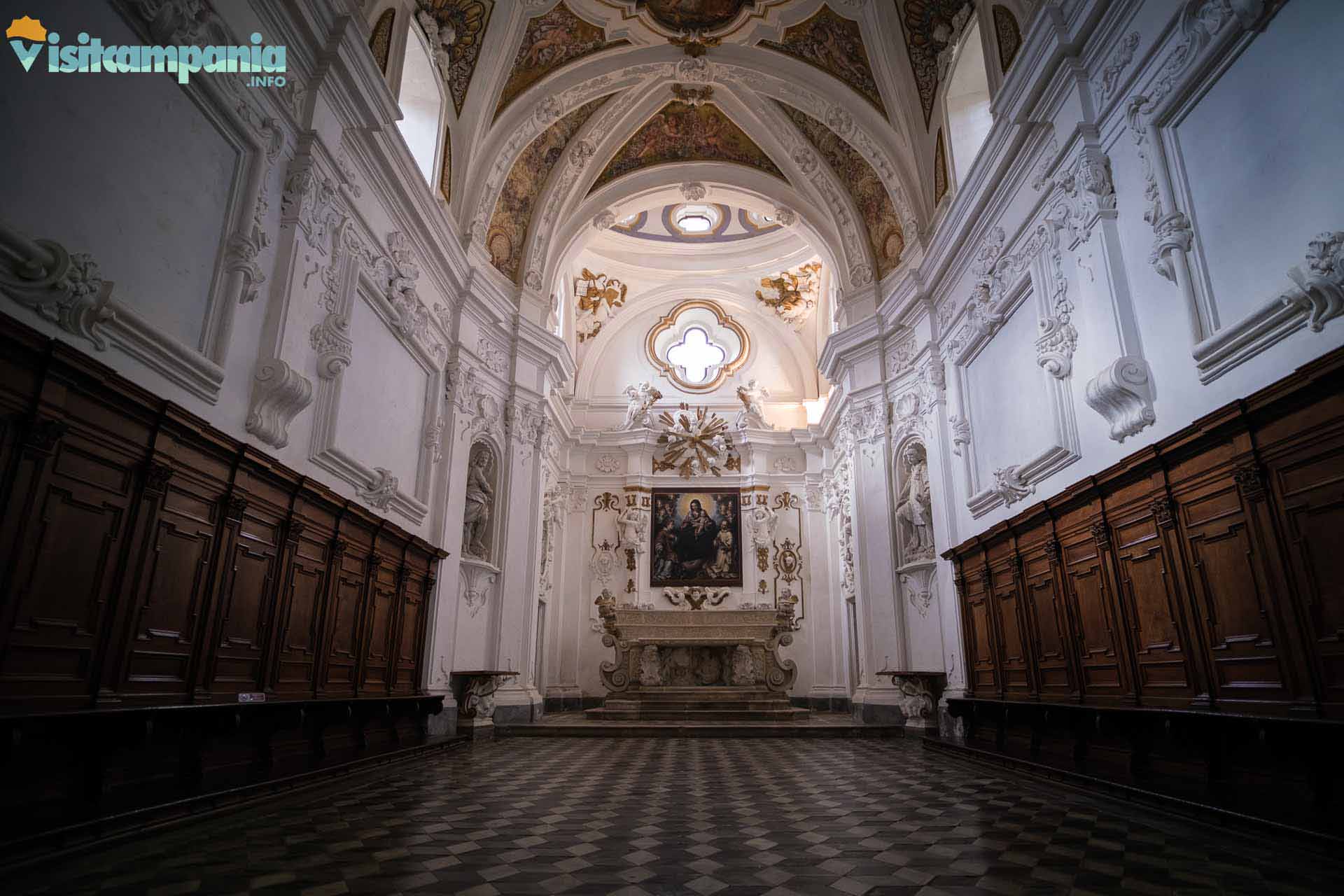
The Certosa di Padula is an architectural marvel that fascinates with the elegance and richness of its spaces. The entire structure is developed around three main cloisters, an enchanting Italian garden (“desertum”) reserved for cloistered monks, several internal courtyards and the splendid church dedicated to San Lorenzo . Although the opulent Neapolitan Baroque prevails, you can still discover fascinating Gothic elements dating back to the 14th century. The very layout of the buildings is symbolic: it recalls the shape of the gridiron of the martyrdom of San Lorenzo .
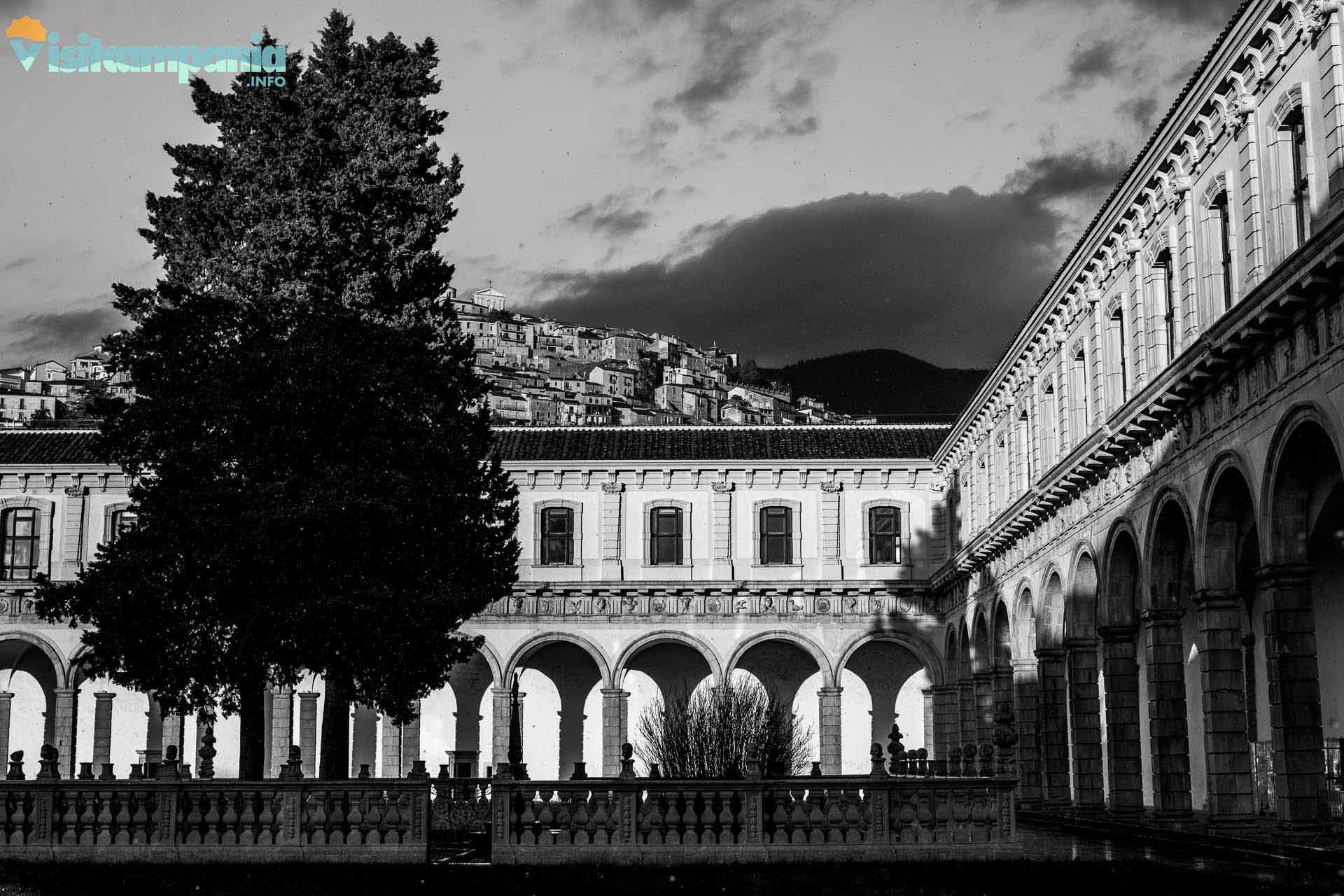
Among the spaces that you absolutely must not miss is the main church , embellished with eighteenth-century frescoes and a suggestive altar decorated in mother-of-pearl and scagliola. Another jewel is the Chiostro Grande , one of the largest in Europe. With a surface area of approximately 15,000 m², it is famous for its elegant double loggia and the magnificent central fountain from 1640.
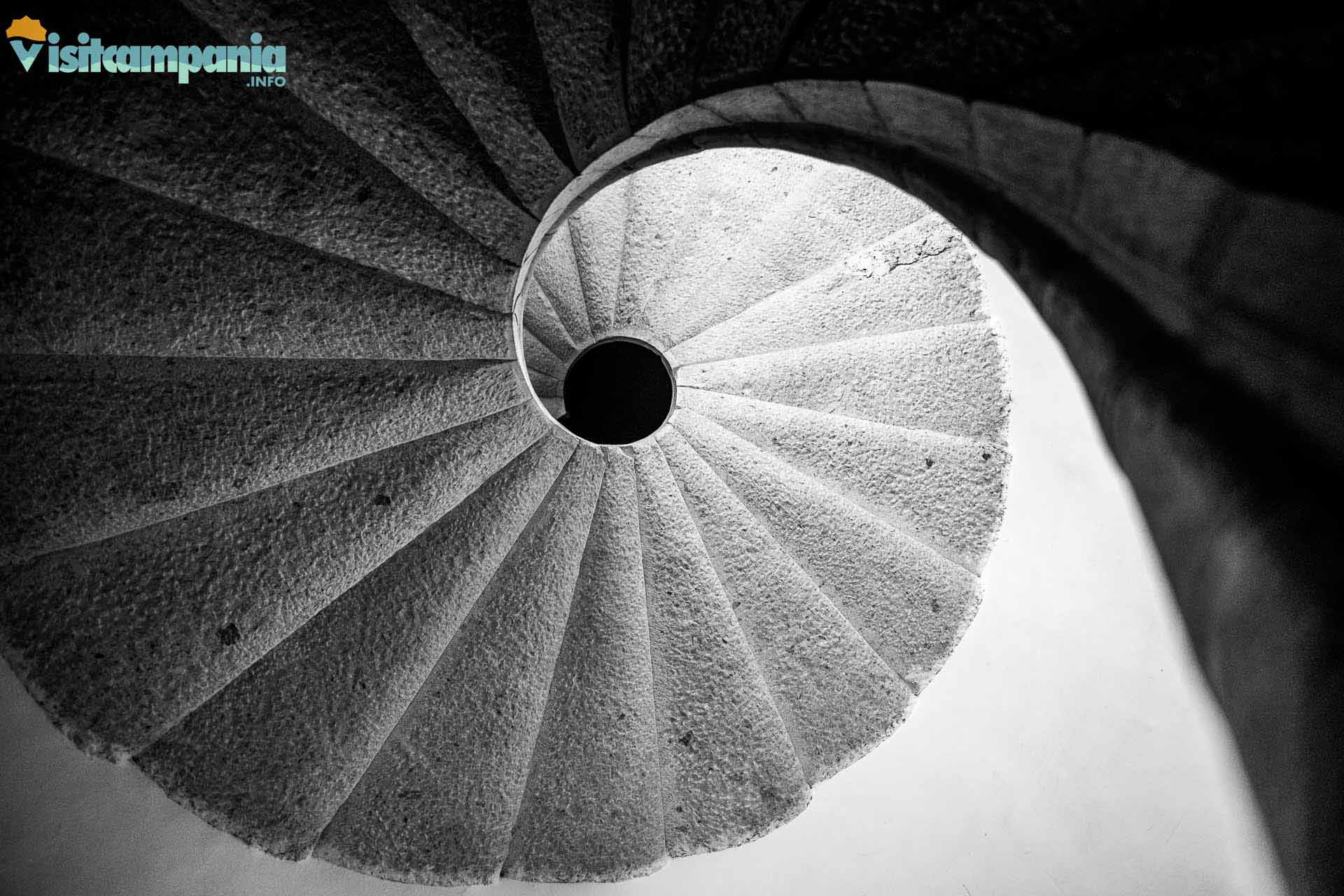
Also worth a visit are the fascinating spiral stone staircase , which leads directly to the refined eighteenth-century library , the refectory decorated with the splendid fresco of the “Wedding at Cana” and the majestic kitchens , dominated by an enormous central fireplace. Also, don’t miss the spectacular eighteenth-century elliptical staircase with large panoramic openings.

Of course, the monks’ cells cannot be missed, some of which, arranged around the Great Cloister, today host installations of modern and contemporary art. Finally, overlooking the courtyard leading to the church of San Lorenzo, are the ancient production areas such as the pharmacy , the cellars , the granaries and the stables .
Provincial Archaeological Museum of Western Lucania
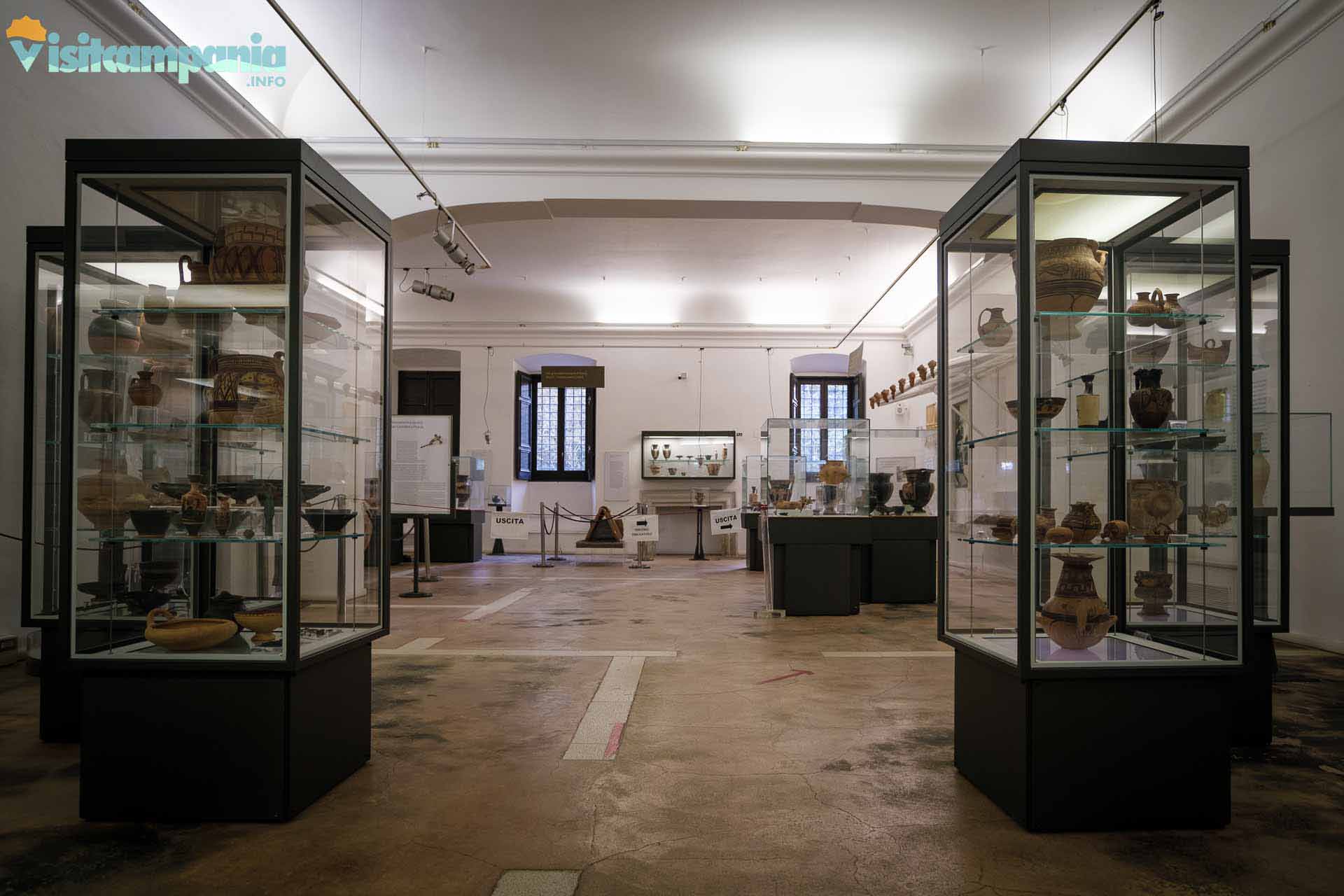
Inside the Certosa di Padula another surprise awaits you: the Provincial Archaeological Museum of Western Lucania , opened in 1957. Housed in the historic rooms of the Quarto del Priore , this museum houses fascinating finds coming mainly from the archaeological excavations of Sala Consilina and Padula .
Here you can admire precious objects that tell over a thousand years of history, from the 10th century BC to the 6th century AD : ancient tombs , commemorative tombstones , evocative statues , decorated capitals and monumental columns that will guide you on a unique journey to discover the historical and cultural roots of this fascinating territory .
PS The photos accompanying the article are published with the permission of the Photo Library of the Regional Directorate of National Museums of Campania
To learn more
- Culture – The Certosa of Padula (podcast);
- Certosa di Padula (or San Lorenzo) Salerno – Campania – Italy (video);
- Certosa di San Lorenzo-Padula and Capelli di Venere waterfall oasis (video);
- The Padula Charterhouse in a nutshell (video);
- Padula – Certosa di San Lorenzo: the Sacristan’s Table (video);
- Certosa di Padula ITA (video);

